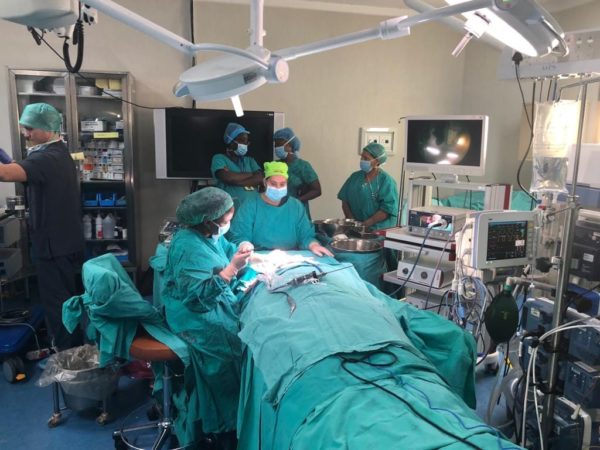A group of South African doctors have made a huge advancement in the international medical field by successfully completing the first-ever middle ear transplant.
The groundbreaking procedure was performed using 3D printing technology to reconstruct the broken bones of the patient’s middle ear and the surgery is being hailed as the first long-term solution to conductive hearing loss.
Patients of all ages will be able to safely undergo this pioneering procedure, even newborn babies. This unique procedure can effectively cure patients of a kind of deafness caused by inner ear damage or infections contracted from birth defects or metabolic diseases.
The patient who underwent the successful transplant was a 35-year-old male who had lost his hearing due to a car accident that severely damaged the inside of his ear. Due to the nature of the patient’s injuries, the operation lasted for roughly one and a half hours.
Professor Mashudu Tshifularo explains the surgery:
According to the South African Hearing Institute, our hearing ability naturally declines from age 30 or 40. In fact, by age 80, more than half of humans suffer from significant hearing loss. While hearing loss is a natural part of ageing, it could also occur as a result of disease or infection. It may also be inherited or be the result of physical damage to the ears or head. This new transplanting procedure could change this seemingly permanent and unavoidable loss of hearing.
A number of specialists were involved in the surgery, including a medical team from the University of Pretoria’s Steve Biko Academic Hospital and specifically Professor Mashudu Tshifularo. He has been studying conductive hearing loss for a decade and more recently in the last two years looking into the use of 3D printing technology to scan and rebuild damaged areas of the ear, including some of the smallest bones in the body.

“By replacing only the ossicles that aren’t functioning properly, the procedure carries significantly less risk than known prostheses and their associated surgical procedures. We will use titanium for this procedure, which is biocompatible. We use an endoscope to do the replacement, so the transplant is expected to be quick, with minimal scarring. 3D technology is allowing us to do things we never thought we could,” says Prof Tshifularo, who is head of the Department of Otorhinolaryngology (Ear, Nose and Throat) at UP. “But I need sponsors and funding for this invention to take off the ground.”
“As a Department of Health, we shall do everything in our power to assist and mobilize resources to make sure that Prof. Tshifularo gets all the help he needs for this far reaching innovation”, said Minister Motsoaledi. The Minister also calls upon donors and development partners, especially in the business community, in South Africa to support this scientific breakthrough.
Pictures: Facebook

